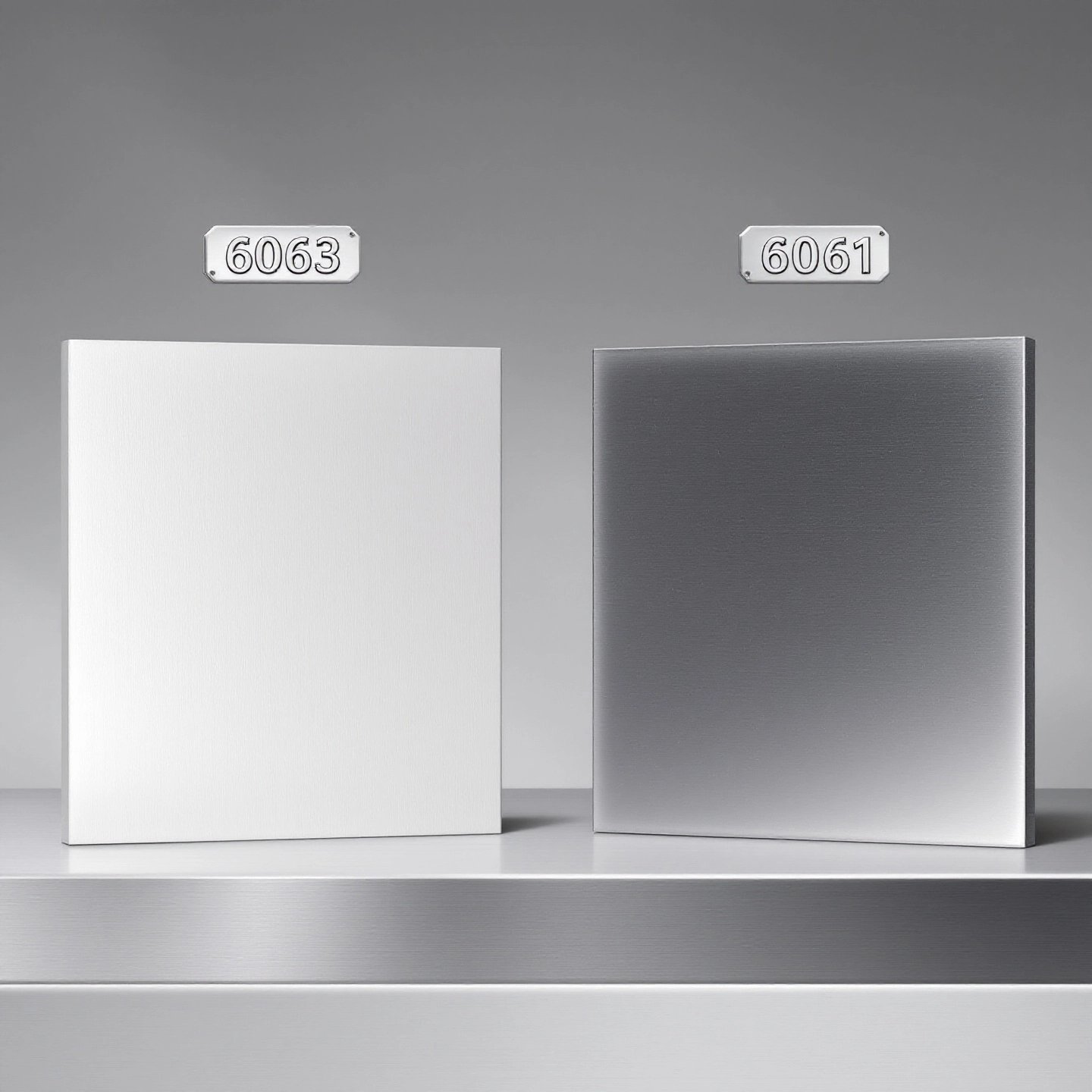
In the world of manufacturing and construction, choosing the right material is crucial for ensuring the success and durability of a project. Aluminum alloys 6063 and 6061 are two of the most popular choices, each offering distinct advantages that cater to specific applications. But how do you decide between 6063 vs 6061 aluminum? Understanding the key differences, typical applications, and critical performance factors can help you make an informed decision.
Aluminum 6061 is often referred to as the "workhorse" of aluminum alloys due to its versatility and balanced properties. It is highly valued for its excellent strength-to-weight ratio, making it ideal for structural applications where durability is paramount. This alloy is commonly used in the construction of bridges, towers, and other structural components where high strength is required (Xometry) .
On the other hand, aluminum 6063 is renowned for its superior surface finish and excellent corrosion resistance, making it the preferred choice for architectural applications. It is commonly used in window frames, door frames, and other aesthetic components where appearance and weather resistance are critical (Industrial Metal Supply) .
Both alloys contain magnesium and silicon, but their varying compositions lead to different mechanical properties and performance characteristics. While 6061 offers higher strength, 6063 provides a better surface finish and is more suited for anodizing, which enhances corrosion resistance and aesthetic appeal.
In this article, we will explore these differences in detail, examining how each alloy's composition impacts its performance. We will also delve into specific applications, from structural uses to architectural designs, helping you determine which alloy best suits your project's needs.
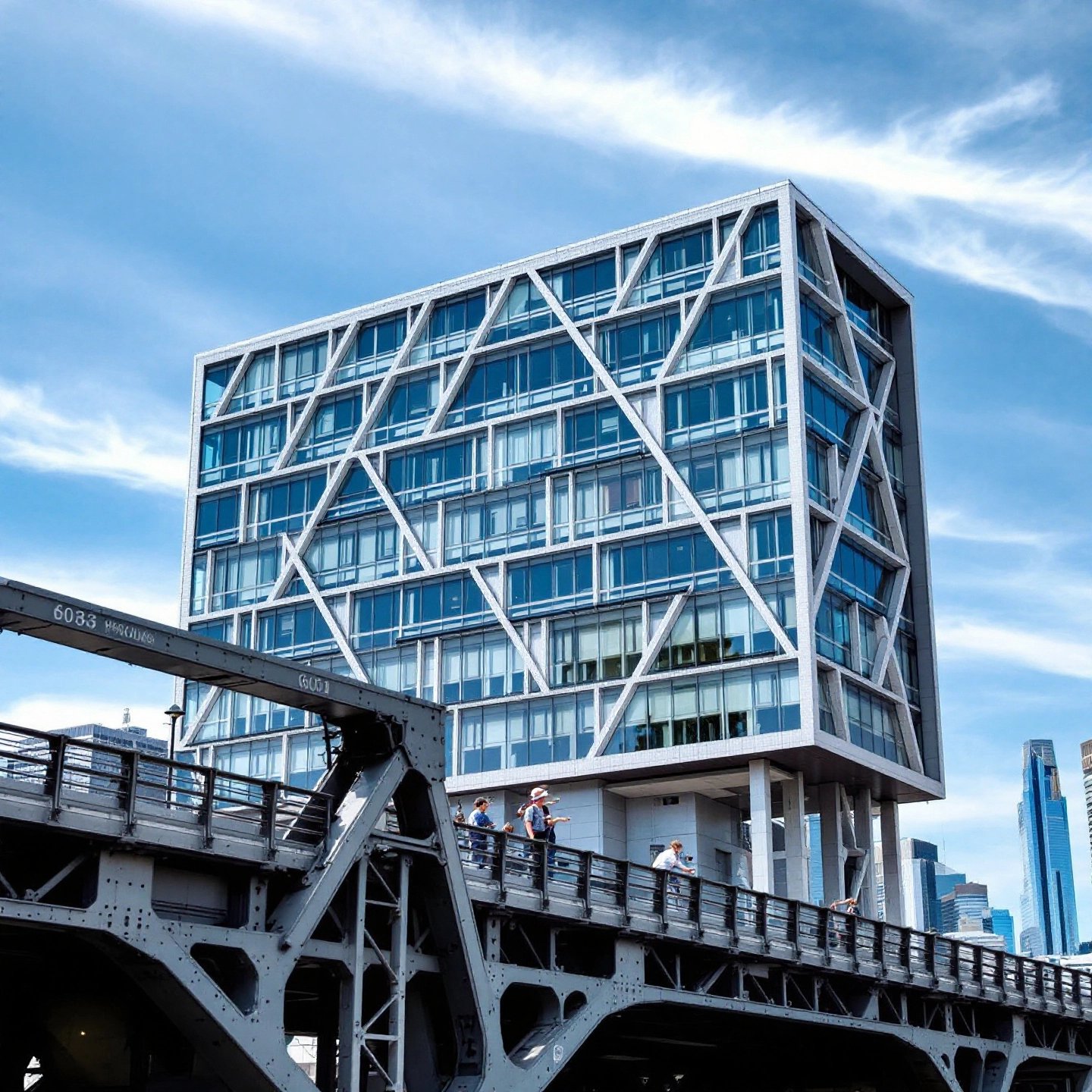
When considering 6063 aluminum vs 6061 , it’s essential to recognize that each alloy serves distinct purposes within industrial and architectural contexts. Though both belong to the 6000 series and share magnesium and silicon as primary alloying elements, their differences significantly influence their applications and suitability for specific tasks.
6063 aluminum is often the go-to choice for architectural projects, thanks to its superior surface finish and excellent corrosion resistance. Imagine walking through a modern building with sleek window frames and artistic facades—chances are, you’re observing the work of 6063 aluminum. Its ability to be extruded into complex shapes makes it ideal for intricate designs, such as door frames, window frames, and even decorative trims. This alloy’s aesthetic appeal is further enhanced by its excellent anodizing capabilities, which provide a durable and attractive finish.
Moreover, 6063's corrosion resistance ensures longevity in outdoor applications, where exposure to the elements is a concern. This makes it a preferred choice for projects prioritizing both beauty and durability (Industrial Metal Service) .
On the flip side, 6061 vs 6063 aluminum applications often favor 6061 for structural purposes. Known as a robust and versatile alloy, 6061 is frequently employed in applications demanding high strength and resilience. Think of the rugged frames of vehicles, the sturdy components of bridges, or the durable parts of machinery—all these often rely on the strength of 6061 aluminum.
6061’s higher tensile strength and excellent machinability make it suitable for demanding environments where structural integrity cannot be compromised. Its use in automotive and aerospace industries underscores its capability to withstand stress and impact, ensuring safety and performance in critical applications (Redstone Manufacturing) .
Deciding between 6061 and 6063 ultimately depends on the specific requirements of your project. If aesthetic appeal and corrosion resistance are paramount, 6063 is likely your best bet. However, if strength and durability are crucial, especially in structural applications, 6061 should be your choice. Understanding these fundamental differences ensures that you select the most suitable material, optimizing both performance and cost-efficiency for your projects.
As we delve deeper into the composition and mechanical properties of these alloys, you'll gain further insights into how each alloy can meet your specific needs, ensuring the success of your endeavors.
Understanding the chemical composition of aluminum alloys 6061 and 6063 is crucial for grasping their distinct performance characteristics. Both alloys belong to the 6000 series, which primarily uses magnesium and silicon as alloying elements. However, subtle differences in their composition significantly influence their mechanical properties and suitability for various applications.
In the case of 6061 vs 6063 chemical composition , both alloys contain magnesium and silicon, but in varying proportions. For 6061, the composition typically includes 0.8-1.2% magnesium and 0.4-0.8% silicon. This combination provides a balanced mix of strength and corrosion resistance, making it well-suited for structural applications. The presence of these elements forms magnesium silicide, which enhances the alloy's ability to withstand stress and improves its hardness.
Conversely, 6063 contains 0.45-0.9% magnesium and 0.2-0.6% silicon. This composition favors a smoother surface finish and better extrudability, which is why 6063 is often preferred for architectural applications. The lower content of magnesium and silicon compared to 6061 allows for better malleability, making it ideal for forming complex shapes with intricate designs (Wikipedia) .
The differences in 6061 vs 6063 composition also impact their hardness and corrosion resistance. 6061, with its higher magnesium content, offers greater hardness and tensile strength, which is advantageous for load-bearing applications. Its robust nature makes it suitable for environments where mechanical stress is a concern.
On the other hand, 6063's composition lends itself to superior corrosion resistance, especially when anodized. This makes it a popular choice for applications exposed to the elements, such as window and door frames. The alloy's ability to resist corrosion while maintaining a high-quality surface finish is a testament to its well-balanced composition (Wikipedia) .
When considering the malleability of these alloys, 6063's composition allows it to be more easily shaped and formed, which is why it is often used in extrusion processes. This property is particularly beneficial in creating complex architectural elements that require precise and intricate designs.
In contrast, while 6061 is less malleable due to its higher strength, it still offers sufficient flexibility for machining and forming processes, albeit with more effort. Its composition ensures that it maintains structural integrity even when subjected to forming operations, which is critical for components that need to withstand significant loads.
In summary, the chemical composition of 6061 and 6063 plays a pivotal role in determining their performance characteristics. By understanding these differences, manufacturers and engineers can make informed decisions about which alloy best fits their project requirements, ensuring optimal performance and longevity in their applications.
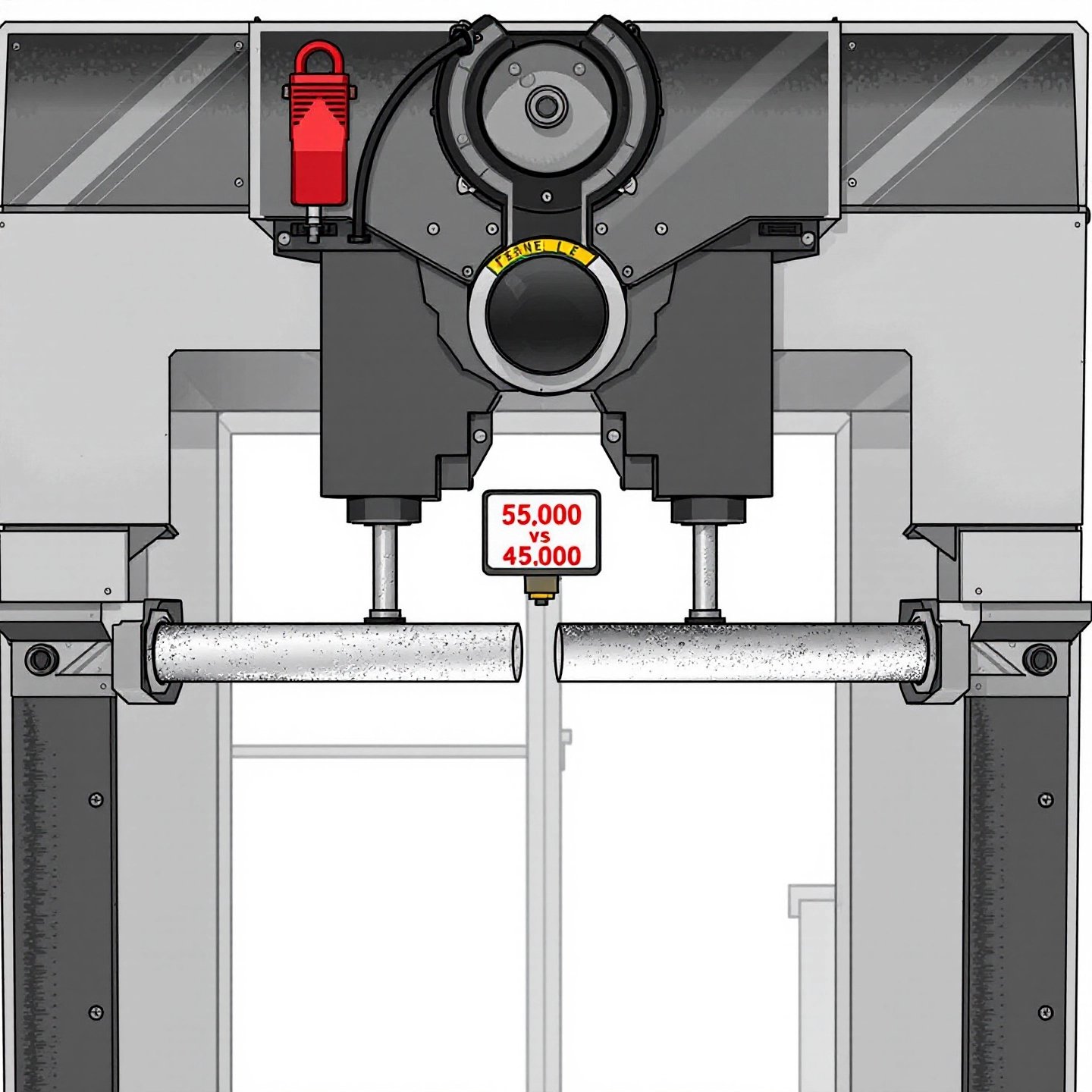
When it comes to selecting the right aluminum alloy for your project, understanding the mechanical properties of 6061 and 6063 is crucial. These properties, including tensile strength, yield strength, and hardness, significantly influence the suitability of each alloy for various applications. Imagine the difference between building a robust bridge and crafting a sleek window frame—each requires specific material characteristics to ensure optimal performance.
In the comparison of 6061 vs 6063 aluminum strength , 6061 stands out due to its superior tensile and yield strength. Tensile strength refers to the maximum stress that a material can withstand while being stretched or pulled before breaking. For 6061, the tensile strength typically reaches up to 310 MPa (45,000 psi) in the T6 temper, making it ideal for demanding structural applications where high load-bearing capacity is essential (AZoM) .
Yield strength, on the other hand, indicates the stress at which a material begins to deform plastically. 6061’s yield strength in the T6 temper can be as high as 275 MPa (40,000 psi), ensuring that it maintains its shape and integrity under significant stress (AZoM) . This makes it a preferred choice for applications like aircraft structures, automotive components, and heavy machinery.
In contrast, 6063 exhibits lower tensile and yield strength, with values around 241 MPa (35,000 psi) and 214 MPa (31,000 psi) respectively in the T6 temper (Gabrian) . While this might seem like a disadvantage, it actually suits 6063 for applications where flexibility and formability are more critical than sheer strength.
Hardness is another key factor in the 6061 vs 6063 strength debate. 6061’s higher hardness provides greater resistance to deformation and wear, making it suitable for applications that demand durability and longevity. This property is particularly beneficial in environments where the material is exposed to abrasive forces or heavy loads.
Conversely, 6063, with its lower hardness, excels in applications where a smooth finish and ease of fabrication are prioritized. Its ability to be easily extruded into complex shapes without compromising surface quality makes it ideal for architectural applications, such as window and door frames, where appearance is as important as functionality.
Ultimately, the decision between 6061 and 6063 depends on the specific requirements of your project. If your focus is on strength and structural integrity, particularly in load-bearing applications, 6061 is the clear choice. Its superior mechanical properties ensure that it can withstand significant stress and maintain its performance over time.
However, if your project demands a material that offers excellent formability and a high-quality surface finish, 6063 is the better option. Its mechanical properties, while not as robust as 6061, provide the flexibility needed for intricate designs and aesthetic applications.
As we continue exploring these alloys, the next section will delve into their corrosion resistance and anodizing outcomes, providing further insights into their performance in real-world applications.
When selecting an aluminum alloy for your project, understanding the corrosion resistance and anodizing qualities of 6061 and 6063 is crucial. These factors not only affect the longevity and durability of the material but also its aesthetic appeal, particularly in environments exposed to harsh conditions.
In the realm of 6061 vs 6063 aluminum corrosion resistance , both alloys offer commendable performance due to their composition, which includes magnesium and silicon. However, 6063 is often preferred for applications requiring superior corrosion resistance. This is largely due to its ability to form a more uniform anodized layer, which acts as a protective barrier against environmental elements.
Research indicates that the anodized layer on 6063, when properly sealed, provides excellent protection against corrosion, making it ideal for architectural applications such as window frames and curtain walls (Gabrian) . The smoother surface finish of 6063 also contributes to its enhanced resistance, as it reduces the likelihood of surface imperfections where corrosion can initiate.
6061, while slightly less resistant to corrosion compared to 6063, still offers robust performance, particularly when anodized and sealed. Studies have shown that anodized 6061 exhibits improved corrosion resistance, especially when sealed with potassium dichromate, which minimizes corrosion current density and weight loss (ScienceDirect) . This makes 6061 suitable for structural applications where exposure to corrosive elements is anticipated.
The anodizing process is critical for enhancing both the durability and aesthetic appeal of aluminum alloys. In the comparison of 6061 vs 6063 anodizing , 6063 stands out for its superior anodizing qualities. The alloy's composition allows for a more consistent and attractive finish, which is why it is often used in applications where appearance is paramount.
Anodized 6063 not only provides a visually appealing surface but also increases the material's resistance to wear and corrosion. This makes it a popular choice for decorative and architectural applications where a high-quality finish is essential.
On the other hand, 6061 can also be effectively anodized, although the resulting finish may not be as smooth as that of 6063. Nevertheless, anodizing 6061 enhances its corrosion resistance and is often used in environments where both strength and protection against the elements are required.
The temper state of an alloy significantly affects its anodizing results. For instance, 6063-T5 and 6063-T6 tempers are commonly used for anodizing due to their good balance of strength and surface finish. These tempers allow for a consistent anodized layer that enhances the alloy’s durability and visual appeal.
Similarly, 6061 in the T6 temper is frequently anodized to improve its corrosion resistance and mechanical performance. The choice of temper state should align with the specific requirements of the application, ensuring that the alloy’s properties are optimized for the intended use.
In conclusion, both 6061 and 6063 offer excellent corrosion resistance and anodizing qualities, with 6063 being more suited for applications where appearance and corrosion protection are critical. As we move forward, the next section will delve into the welding and machinability of these alloys, providing further insights into their practical applications.
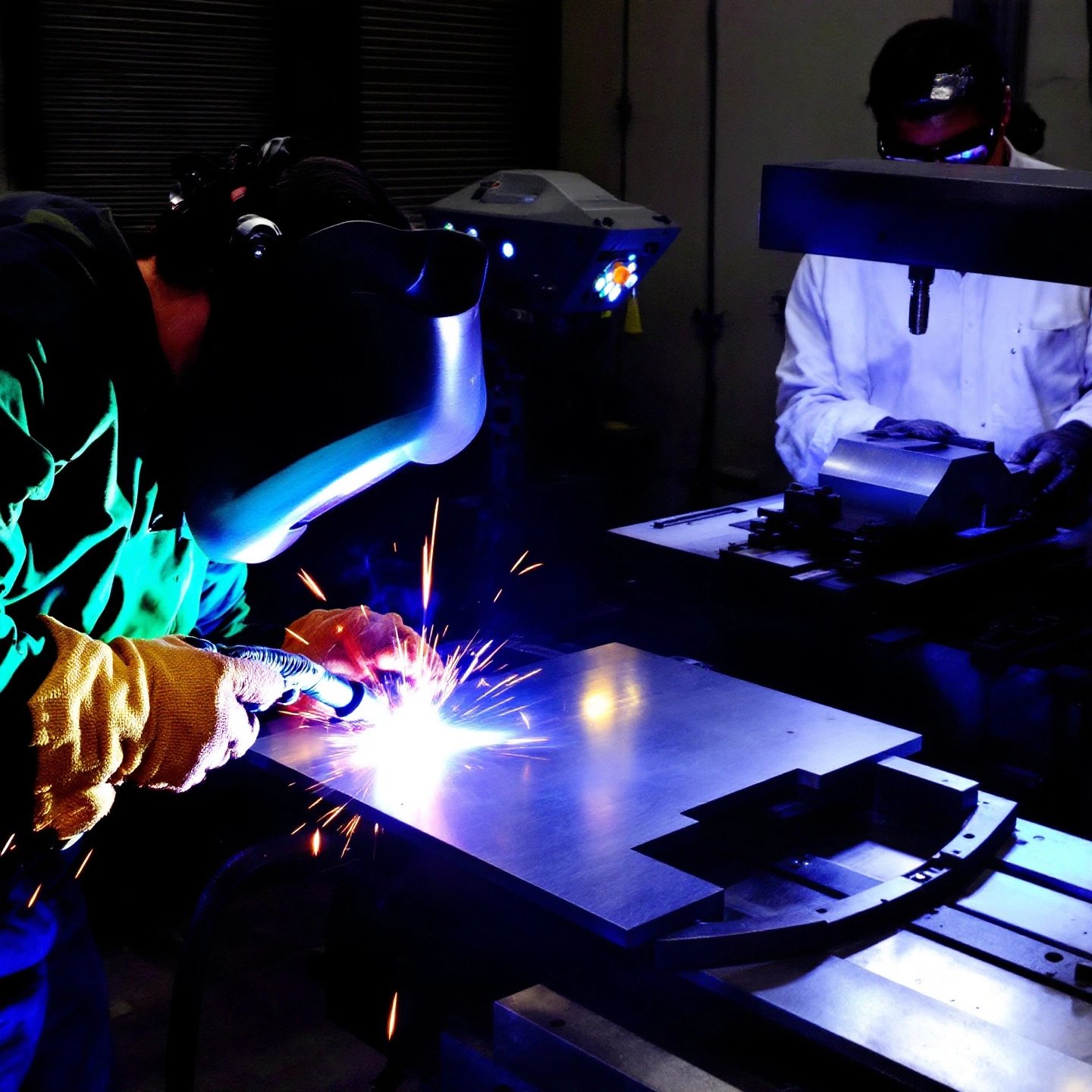
When it comes to working with aluminum alloys like 6061 and 6063, understanding their welding and machinability characteristics is essential for achieving optimal results. Each alloy presents unique challenges and opportunities, requiring specific techniques to harness their full potential.
Welding aluminum, particularly 6061 vs 6063 welding , involves navigating their distinct properties. 6061 is known for its excellent weldability, especially when using TIG (Tungsten Inert Gas) welding, which provides precise control over the heat input, crucial for aluminum's high thermal conductivity. However, 6061 can lose up to 30-50% of its strength in the heat-affected zone (HAZ) during welding, necessitating post-weld heat treatment to restore its mechanical properties (ArcCaptain) .
6063, on the other hand, is often favored for applications where appearance and surface finish are priorities. Its lower strength compared to 6061 makes it more forgiving during the welding process, reducing the risk of distortion. MIG (Metal Inert Gas) welding is commonly used for 6063, offering faster welding speeds and making it suitable for larger projects where efficiency is key.
In the realm of 6061 vs 6063 machinability , both alloys are considered highly machinable, but they exhibit different characteristics that influence their processing. 6061 is renowned for its excellent machinability, attributed to its balanced composition of magnesium and silicon. This makes it ideal for precision components where high dimensional accuracy is required, such as in aerospace or automotive applications (Gabrian) .
6063, while also machinable, is more suited for applications where complex shapes and fine details are needed. Its superior surface finish and ease of extrusion make it a popular choice for architectural elements, where aesthetic appeal is paramount. However, machinists should be aware that 6063’s softer nature requires careful handling to prevent surface damage during machining.
To achieve the best results when working with 6061 and 6063, consider the following best practices:
By understanding the nuances of 6061 vs 6063 welding and machinability, manufacturers can make informed decisions that optimize both performance and efficiency in their projects. As we explore further, the next section will evaluate the bending and forming capabilities of these alloys, providing deeper insights into their versatility and application scope.
When it comes to the bending and forming capabilities of aluminum alloys, understanding the nuances between 6061 vs 6063 bending is essential. Each alloy presents unique challenges and opportunities, particularly in terms of ductility and ease of forming, which are critical for applications ranging from structural components to intricate architectural details.
The ductility of an alloy is a key factor in its ability to be bent and formed without cracking. In the comparison of 6061 vs 6063 ductility , 6063 generally offers greater ductility, making it more suitable for applications requiring complex shapes and smooth finishes. This is largely due to its lower magnesium content, which enhances its ability to be extruded into intricate profiles without compromising structural integrity.
6061, while less ductile, still provides sufficient flexibility for many forming operations. However, it requires larger bend radii to prevent cracking, especially in the T6 temper, which is known for its increased strength but reduced formability. For applications demanding tighter bends, 6061 in the annealed (O) temper is preferred, as it offers improved malleability and reduces the risk of fracture during forming (The Fabricator) .
Temper states play a crucial role in the bending and forming capabilities of aluminum alloys. For 6063, the T5 and T6 tempers are commonly used, providing a good balance between strength and formability. These tempers allow for precise and consistent bending, making 6063 a popular choice for applications like window frames and curtain walls, where both aesthetic and functional aspects are important.
In contrast, 6061 is often used in the T6 temper for structural applications due to its high strength. However, when forming is a priority, the T4 temper can be considered, offering a compromise between strength and ductility. This makes it suitable for applications where some degree of bending is required without sacrificing too much strength (Harbor Aluminum) .
To achieve successful bending and forming with these alloys, consider the following practical tips:
Understanding the bending and forming capabilities of 6061 and 6063 allows manufacturers to select the right material and temper for their specific needs, optimizing both performance and cost-efficiency. As we progress, the next section will explore the suitability of these alloys for tubing and other specialized applications, providing further insights into their versatility.
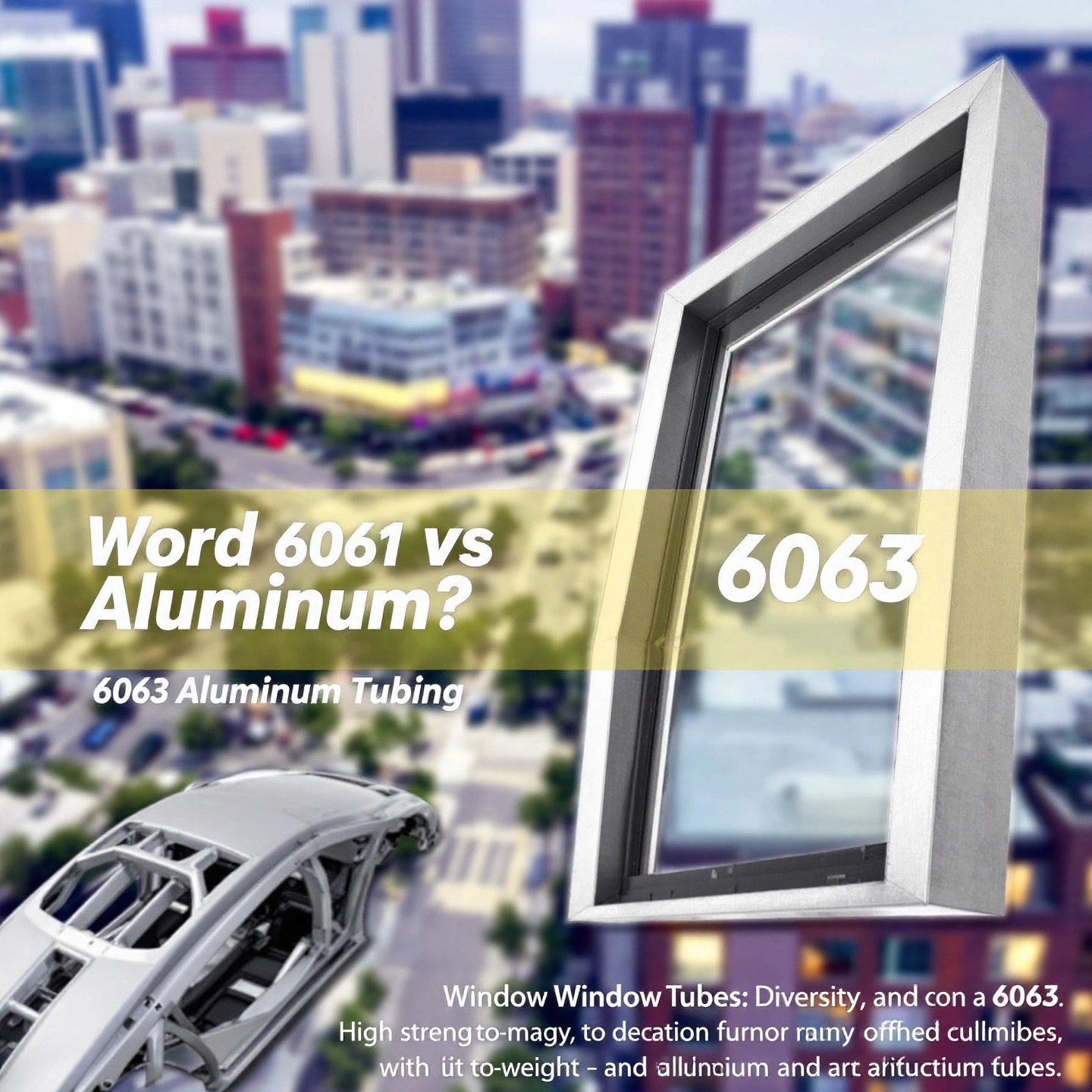
When it comes to selecting the right aluminum alloy for tubing and other specialized applications, the choice between 6061 and 6063 is pivotal. Each alloy offers distinct advantages that cater to specific needs, from architectural designs to heavy-duty structural projects. But how do you determine which is best suited for your application?
Aluminum tubing is a versatile component used across various industries, from construction to transportation. The decision between 6061 vs 6063 aluminum tubing often boils down to the balance between strength and formability. 6061 aluminum is renowned for its high strength and excellent machinability, making it ideal for applications where structural integrity is paramount. This includes uses in automotive frames, aerospace components, and industrial machinery where durability is a critical factor (Metal Supermarkets) .
On the other hand, 6063 is often favored for its superior extrudability and surface finish, which are crucial for architectural applications. Its ability to be formed into complex shapes with smooth surfaces makes it perfect for window frames, door frames, and decorative trim. Additionally, 6063's excellent corrosion resistance ensures longevity in outdoor environments, a vital consideration for architectural elements exposed to the elements (Gabrian) .
In specialized sectors such as automotive and rail transit, the choice between 6061 and 6063 can significantly impact performance and safety. 6061's high strength-to-weight ratio makes it suitable for critical components like vehicle frames and suspension parts, where robust performance under stress is essential. Its use in rail transit is also notable, providing structural components that need to withstand dynamic loads and vibrations.
Meanwhile, 6063 finds its niche in areas where aesthetics and corrosion resistance are prioritized. In rail transit, it is often used for interior fittings and decorative elements, offering a blend of form and function that enhances both the visual appeal and durability of the components.
Ultimately, the decision between 6061 and 6063 should be guided by the specific requirements of your project. If strength and machinability are your primary concerns, particularly for load-bearing applications, 6061 is likely the better choice. However, if your project demands a high-quality surface finish and excellent corrosion resistance, especially in architectural and decorative applications, 6063 is the alloy to consider.
As you evaluate these options, it's important to consider not only the immediate needs of your project but also the long-term performance and cost implications. By understanding the unique characteristics of each alloy, you can make an informed decision that maximizes both performance and efficiency.
As we continue our exploration, the next section will delve into the cost factors associated with these alloys, providing insights into how they impact overall project expenses.
When planning a project that involves aluminum alloys, understanding the cost implications of using 6061 versus 6063 is essential. Both alloys offer unique advantages that can influence project expenses, from material costs to processing and long-term maintenance. So, how do these factors play out in practical scenarios?
The 6061 vs 6063 cost analysis often begins with the base price of the materials. Generally, 6063 tends to be less expensive than 6061, primarily due to its lower strength and simpler processing requirements. This cost advantage makes 6063 an attractive option for projects where budget constraints are a significant concern, particularly in architectural applications where high strength is not the primary requirement (Triad Products Corp) .
However, the lower price of 6063 does not always translate to savings in all contexts. For applications demanding higher strength and durability, the superior mechanical properties of 6061 may justify its higher cost. In structural projects, where failure could lead to significant safety risks and additional costs, investing in the more robust 6061 alloy can be a wise decision.
Processing and forming characteristics also play a critical role in the 6061 vs 6063 price debate. 6063's excellent extrudability and formability can reduce manufacturing costs, especially for complex shapes and designs. This ease of processing can lead to lower labor costs and faster production times, which are crucial for large-scale architectural projects.
In contrast, 6061, while more challenging to form due to its higher strength, offers excellent machinability, which can be advantageous for precision components. The additional processing steps required for 6061, such as heat treatment, can add to the overall cost, but these are often offset by the alloy's superior performance in demanding environments.
Beyond initial expenses, long-term cost considerations are crucial when choosing between 6061 and 6063. The durability and strength of 6061 can result in lower maintenance costs and longer service life, particularly in structural applications where wear and tear are significant factors. This longevity can lead to substantial savings over the lifespan of a project, justifying the initial investment in the more expensive alloy.
Conversely, 6063’s excellent corrosion resistance and aesthetic appeal can reduce the need for frequent replacements or repairs in architectural applications, further enhancing its cost-effectiveness over time.
In conclusion, the decision between 6061 and 6063 should be guided by a comprehensive analysis of project requirements, balancing initial material costs with long-term performance and maintenance considerations. By carefully evaluating these factors, you can choose the alloy that offers the best value for your specific needs, ensuring both cost-efficiency and project success.
As we wrap up our discussion on cost factors, the final section will summarize the key takeaways from our comparison, helping you make informed decisions for your future projects.
As we conclude our exploration of the 6061 vs 6063 aluminum alloys, it becomes clear that each alloy brings unique strengths to the table, catering to different industrial needs. Understanding these differences is crucial for making informed decisions that ensure the success and longevity of your projects.
Throughout our analysis, we have seen that 6061 aluminum stands out for its superior strength and versatility. Its robust mechanical properties make it the preferred choice for structural applications, such as in aerospace and automotive industries, where durability and load-bearing capacity are paramount. On the other hand, 6063 aluminum is celebrated for its excellent corrosion resistance and aesthetic appeal, making it ideal for architectural applications where appearance and weather resistance are critical.
In terms of composition , both alloys share magnesium and silicon as primary elements, but their varying proportions result in different performance characteristics. 6061’s higher magnesium content contributes to its strength, while 6063’s balanced composition enhances its formability and surface finish.
When considering cost , 6063 often presents a more budget-friendly option due to its simpler processing needs. However, for projects demanding higher strength, the investment in 6061 can be justified by its long-term durability and reduced maintenance costs.
The decision between 6061 and 6063 should be guided by your specific project requirements. If strength and machinability are your primary concerns, particularly for load-bearing applications, 6061 is likely the better choice. However, if your project demands a high-quality surface finish and excellent corrosion resistance, especially in architectural and decorative applications, 6063 is the alloy to consider.
As you plan your next project, consider the capabilities of Shengxin Aluminum. With over two decades of expertise, Shengxin offers a wide range of high-quality aluminum profiles tailored to meet diverse industrial needs. Their commitment to precision and innovation ensures that you receive products that not only meet but exceed your expectations. For more information on their offerings, visit Shengxin Aluminum .
For a more in-depth look at choosing between 6061 and 6063, you can also visit this blog from Shengxin: Aluminum 6061 vs 6063: Mastering Your Alloy Choice .
By selecting the right alloy and partnering with a trusted supplier like Shengxin, you can optimize both performance and cost-efficiency, ensuring the success and longevity of your projects.
6063 aluminum is ideal for architectural applications due to its excellent surface finish and corrosion resistance. It's commonly used in window frames, door frames, and other aesthetic components that require a high-quality appearance.
6063 is generally preferred for anodizing because it offers a smoother surface finish and superior corrosion resistance, making it ideal for applications where appearance is crucial. However, 6061 can also be anodized effectively, particularly when strength is more important than finish.
Yes, 6061 T6 is stronger than 6063 T52, making it better suited for structural applications requiring high tensile strength and durability, such as in aerospace and automotive industries.
6063 is typically less expensive due to its simpler processing needs, making it cost-effective for architectural projects. However, 6061's higher strength can justify its cost in applications where durability and load-bearing capacity are essential.
6061 is preferred for tubing in structural applications due to its high strength and machinability. However, 6063 is favored for architectural tubing where superior surface finish and corrosion resistance are required.
 Интернет Сервис
Интернет Сервис 0086 136 3563 2360
0086 136 3563 2360 sales@sxalu.com
sales@sxalu.com +86 136 3563 2360
+86 136 3563 2360